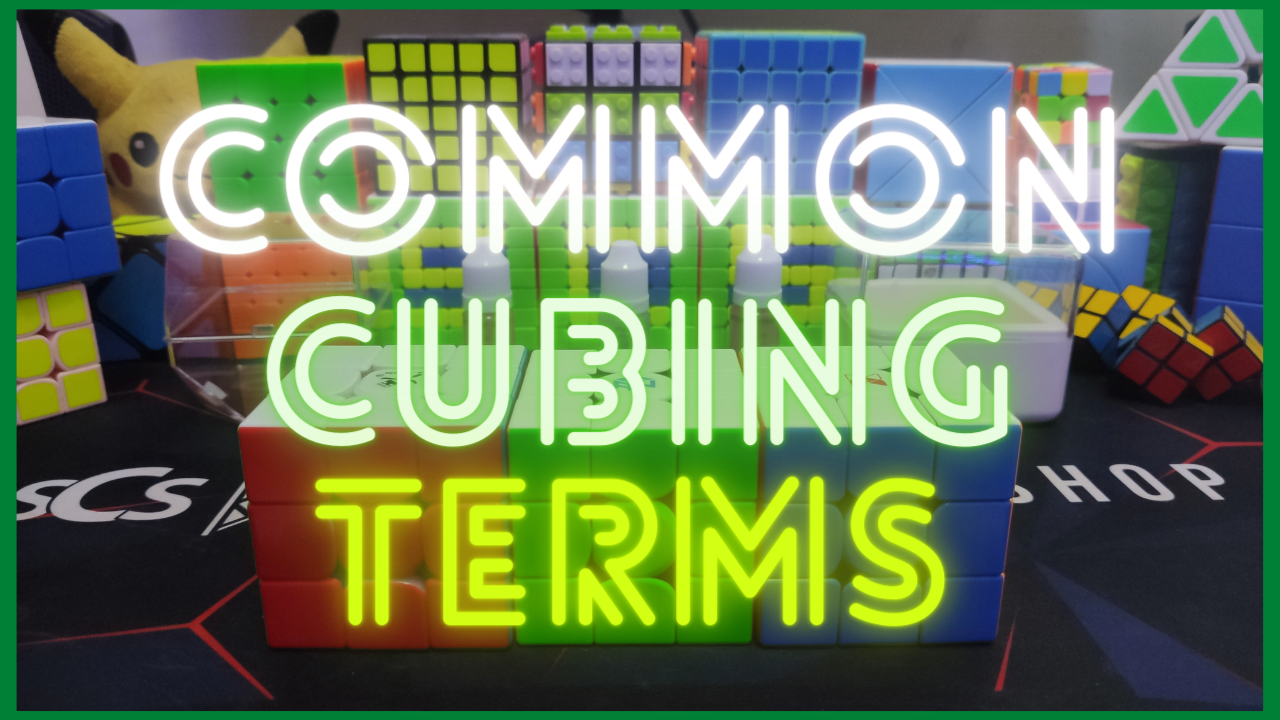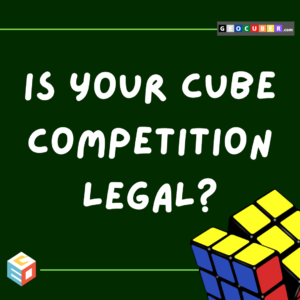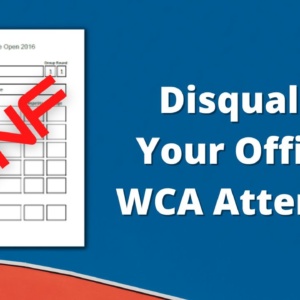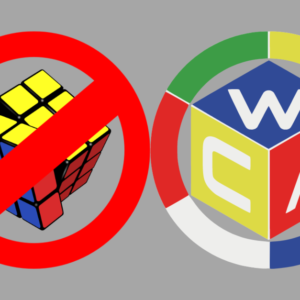
Rubik’s cube, one of the Top Highest Selling Toys in the world, is still getting more fans despite becoming almost half a century old.
Due to the pandemic, it is not surprising to see more people, specially kids, to get hooked to this fun and challenging toy. If you are one of the new cubing enthusiasts or if you are a cubing veteran who’s just not so familiar with the cubing terms, here’s a list of common cubing terms for you. If there’s a useful cubing term that you know that I missed, please comment them below so that I can add them.
WCA
World Cube Association – governs competitions for mechanical puzzles that are operated by twisting groups of pieces, commonly known as ‘twisty puzzles’. The most famous of these puzzles is the Rubik’s Cube, invented by professor Rubik from Hungary. A selection of these puzzles are chosen as official events of the WCA.
(source: https://www.worldcubeassociation.org)
WR
World Record – record-speed solve for any official cubing event (e.g 3x3x3, 4x4x4…) that is the fastest in the whole world. For a solve to be an official solve, the solve must be done during an official competition sanctioned by WCA and a WCA Delegate must confirm that the attempt followed the WCA regulations.
UWR
Unofficial World Record – solves done faster than the current World Record but not in a competition sanctioned by WCA. Whether it’s done at home, on a TV show, during a famous event, or a legitimate cubing competition, the solve is still “unofficial” if it’s not a WCA-sanctioned event.
CR
Continental Record – record-speed solve for any official cubing event (e.g 3x3x3, 4x4x4…) that is the fastest in the continent where the solver/competitor is officially registered as a competitor. For a solve to be an official solve, the solve must be done during an official competition sanctioned by WCA and a WCA Delegate must confirm that the attempt followed the WCA regulations.
NR
National Record – record-speed solve for any official cubing event (e.g 3x3x3, 4x4x4…) that is the fastest in the country where the solver/competitor is officially registered as a competitor. For a solve to be an official solve, the solve must be done during an official competition sanctioned by WCA and a WCA Delegate must confirm that the attempt followed the WCA regulations.
PB
Personal Best – the official or unofficial fastest solve of a cuber/competitor for any given twisty puzzle. A PB is official if it was made during an official competition. Most cubers usually refer to their unofficial PB which they usually get during practice. Unofficial PBs are usually faster than official ones because they were achieved in a more relaxing environment and with the use of unofficial scrambles that are, in a way, easier to solve.
Sub-X or SubX (e.g. sub1, sub10, sub30, etc.)
Sub- is a common prefix in the English language which means below, under, or beneath like in the words submarine, subtitle, and subset. In cubing terms, Sub followed by a number, refers to the upper bound of the solving times of a cuber. In other words, it implies that 99% of the solves done by the cuber will not exceed that time. All of their solving times should be “below” that number.
DNF
Did Not Finish – is a competition term widely used in many disciplines. In cubing, it refers to the unsolved state of a puzzle after an attempt. If an attempt is “finished” (meaning the timer has already been stopped by the solver) with the puzzle being in an unsolved state, the from the timer will be disregarded and solve time will be a “DNF”. Note that if one of the counted times is a DNF, the average will also be DNF. In addition, according to WCA regulation 2j1a, if the competitor has already started at least one attempt in a round before being disqualified from it, the results of all remaining attempts in the event are recorded as DNF. (see WCA regulations for other ways to get a DNF)
DNS
Did Not Start – According to 9f5 of the WCA Regulations, he result of an attempt is recorded as DNS (Did Not Start) if the competitor is eligible for an attempt but declines it. Note that in an official competition, the competitor must be ready to start the attempt within one minute from the moment they are asked [if they’re ready], or else the competitor forfeits the attempt (DNS), at the discretion of the judge (see WCA Regulation A3b1).
Twisty Puzzle
refers to Rubik’s-cube-like puzzles that you have to twist and/or turn to match the colors of its sides. The most popular one is the 3x3x3. There are 3 types of twisty puzzles– face-turning (like the 3x3x3), corner-turning (like skewb), and those that can do both (like pyraminx).
Cube
The term cube originally refers to the Rubik’s Cube (3x3x3) and eventually became a generic term for any cube-shaped twisty puzzle. With the introduction of newer types of twisty puzzles and the cubing community growing at a very fast pace, the word cube became as misnomer for all twisty puzzles regardless of shape. So don’t be surprised if you hear someone say “triangle cube”. They are probably referring to a pyraminx.
Cuber
also known as speedcuber or speedsolvers. The term cuber is the combination of the word “cube”, which is the verbalized version of the shape of a rubik’s cube, and the suffix -er which is used to describe a person or thing that does or provides an action. The term cuber is also used to refer to people solving other twisty puzzles that don’t necessarily have cube shapes.
Cube Meet
A term coined by cubers to refer to gatherings purposely planned to do cubing related stuff like mini competitions, algorithm sharing, and just solving.
LBL
Layer by Layer. LBL, also known as the beginner’s method is a way solving the Rubik’s cube by layer. It’s one of the easiest methods to learn because it doesn’t need many algorithms.
CFOP
is undeniably the most common method used by speedcubers to solve a Rubik’s cube. CFOP is an acronym where every letter stands for the steps speedcubers follow to solve a Rubik’s cube. C is for Cross, F is for F2L, O is for OLL and P is for PLL.
Algs / Algorithms
Algorithms are what non-cubers call “patterns”. Technically speaking, algorithm is a process or set of rules to be followed in calculations or other problem-solving operations, especially by a computer. In cubing, it is much simpler. It refers to the set of moves that need to be done to an unsolved cube to achieve a certain movement of the pieces or better yet solve the entire puzzle.
F2L
First 2 Layers. This refers to the step in CFOP method where the first 2 layers of a Rubik’s cube are solved simultaneously. Unlike the LBL where the first 2 layers are solved separately, in CFOP, the first 2 layers are solved simultaneous with the help of more pre-learned algorithms. By learning F2L alone, speedsolvers improve their times significantly.
LL
Last Layer – refers to the last unsolved layer of a cube.
OLL
Orientation of the Last layer – set of algorithms that when applied correctly to last layer of a Rubik’s cube, the last layer pieces or cubees will be oriented correctly (solving the color of the last layer but doesn’t necessarily solve the side colors of the last layer) while preserving the already solved first 2 layers.
PLL
Permutation of the last layer – set of algorithms that when applied correctly to last layer of a Rubik’s cube, the last layer pieces or cubees will move to their respective correct locations while preserving their correct orientation and the already solved first 2 layers.
Cubee
an old term used to refer to the smaller parts of a Rubik’s cube. A regular Rubik’s has 8 corner pieces (those with 3 colors) and 12 edge pieces (those with 2 colors). That’s a total of 8 cubees.
BLD
short for Blindfolded. A WCA event where the competitor solves a puzzle while blindfolded. The competitor may inspect the cube without a time limit before donning a blindfold and starting the solve. The total solving time will be the sum of both inspection time and execution time. The BLD event has 4 official variations: 3BLD (3x3x3 blindfolded), 3BLD (4x4x4 blindfolded), 5BLD (5x5x5 blindfolded), and MBLD (3x3x3 multiple cubes blindfolded).
MBLD
short for Multi-blind. A WCA event where the competitor solves at least two 3x3x3 cubes while blindfolded. The competitor may inspect the cubes and memorize before donning a blindfold and starting the solve. The total solving time will be the sum of both inspection time and execution time. There’s a time limit of 10 minutes for each cube in the attempt. The time limit may accumulate to up to 60 minutes. This means that for 7 cubes and more, the time limit is still 60 minutes.
OH
short for One-Handed. A WCA event where the competitor solves a 3x3x3 cube using only one hand. Either left or right hand may be used but switching in the middle of a solve is not allowed. The table may be used for support but touching the cube to any parts of the solver’s body while solving is not allowed.
FMC
Fewest Moves Challenge – is an event where competitors attempt to solve a puzzle (almost always the 3x3x3) in as few moves as possible, starting from a given scramble. Competitors have to right every single move of their solution on the given FMC sheet that contains the given scramble. The solution should not be derived directly from the scramble. The FMC sheet has enough space for 80 inputs. This means that only solutions with 80 moves or less are accepted. Time limit is 60 minutes.
Ao5
For “Average of 5” rounds, competitors are allotted 5 attempts. Of these 5 attempts, the best and worst attempts are removed, and the arithmetic mean of the remaining 3 attempts determines the competitor’s ranking in the round. One DNF or DNS is permitted to count as the competitor’s worst result of the round. If a competitor has more than one DNF and/or DNS result in the round, their average result for the round is DNF. (See WCA Regulation 9f)
Bo3 or Best of X
For “Best of X” rounds, rankings are assessed based on the best result per competitor. “Better” is defined as the shorter time. For 3x3x3 Fewest Moves, “better” is defined as the shorter solution length. For 3x3x3 Multi-Blind, rankings are assessed based on the number of puzzles solved minus the number of puzzles not solved, where a greater difference is better. If the difference is less than 0, or if only 1 puzzle is solved, the attempt is considered unsolved (DNF). If competitors achieve the same result, rankings are assessed based on total time, where the shorter recorded time is better. If competitors achieve the same result and the same time, rankings are assessed based on the number of puzzles the competitors failed to solve, where fewer unsolved puzzles are better.
Mo3
For “Mean of 3” rounds, competitors are allotted 3 attempts. The arithmetic mean of the 3 attempts determines the competitor’s ranking in the round. If the competitor has at least one DNF or DNS result, their average result for the round is DNF. (See WCA Regulation 9f)
WCA events
The official events of the WCA are: 3x3x3 Cube, 2x2x2 Cube, 4x4x4 Cube, 5x5x5 Cube, 3x3x3 One-Handed, Clock, Megaminx, Pyraminx, Skewb, Square-1, 6x6x6 Cube, 7x7x7 Cube, 3x3x3 Blindfolded, 4x4x4 Blindfolded, 5x5x5 Blindfolded, Fewest Moves, and 3x3x3 Multi-Blind. The event 3x3x3 with Feet was removed from the list of official WCA on January 1, 2020 decrementing the number of official WCA events down to 17.
Bronze Member
Bronze is assigned to anyone who has a single result in every official WCA event. (Note, this status is an unofficial statistic [that] is not officially recognized by the WCA)
Silver Member
Silver is assigned to anyone who has a single and average result in every official WCA event. (Note, this status is an unofficial statistic [that] is not officially recognized by the WCA)
Gold Member
Gold is assigned to anyone who has a single and average result in every official WCA event and has done one of the following: podiumed at a World Championship, broken a World record, or broken a continental record. (Note, this status is an unofficial statistic [that] is not officially recognized by the WCA)
Platinum Member
Platinum is assigned to anyone who has a single and average result in every official WCA event, has podiumed at a World Championship, and has broken a World and Continental record. (Note, this status is an unofficial statistic [that] is not officially recognized by the WCA)
Relay
There are no limits, specific rules, nor restrictions on how to do a [cube] relay aside from the fact that you need to solve more than 1 puzzle as fast as you can. Anything is possible. One may solve a number of puzzles of the same type. Others solve different types altogether like the 2-3-4-5-6-7 relay where six different puzzles (2x2x2, 3x3x3, 4x4x4, 5x5x5, 6x6x6, and 7x7x7) have to be solve. If you don’t have a lot of cubes, you may try 2-3-4 relay. If you’re a collector and you have a lot of free time, you may try to solve all the puzzles in your collection. Good luck!
Guildford challenge
A challenge where at least one speedcuber try to solve all WCA events (except BLD events) one after another. Typically done by having a team of speedcubers solve each of their puzzle of expertise. A speedcuber may solve more than 1 puzzle.
Team BLD
An unofficial variation of 3BLD which consist of a pair of solvers instead of 1. Solver 1 is blindfolded beforehand and will have to solve cube by following the instructions of Solver 2. Solver 2 inspects and memorizes the cube before putting their own blindfold and passing the cube to solver 1. Neither of the solvers can remove their blindfolds until the attempt is over.
Factory Solves
Another fun way to solve a Rubik’s cube together with friends. This is usually done during cube meets or anytime a group of speedcubers gather. In factory solves, a group of speedsolvers have to solve only one Rubik’s cube together where each of the solvers only performs a part of the solution before passing it to the next solver. The group usually divide among themselves the 4 steps of CFOP. There’s is also a version where the F2L part is divided into 4 parts. If you have a lot of friends and you want additional challenge, try to solve it by allowing only 1 move per cuber.
Torpedo
A revolutionary piece of plastic added to the interior of old 3x3x3 cubes to help interlock the cubees/pieces together and avoid pops. Nowadays, cube internals already have their own anti-pop designs so a lot of cubers have already forgotten the existence of torpedoes in the past.
Pop
happens when a cubee (a corner or edge part) disconnects from the rest of the cube due to high turning speeds or poor internal design. In an official competition, a competitor may put back any parts that are moved out of place. (see WCA Regulation 5b3 for more information)
Look-ahead
A solving technique used by speedcubers where they look for the next pieces they want to solve mid-solve. By doing look-ahead, speedcubers can plan or anticipate their next moves thus, minimizing their pauses in-between algs which leads to a faster solving time.
Think-ahead
A solving technique used by BLD speedcubers where they think of the next piece or pairs they want to solve while executing the solution for the current piece or pair they are solving. By doing think-ahead, BLD speedcubers can plan or set-up for their next moves thus, minimizing their pauses in-between algs which leads to a faster solving time.
Color Neutral
Most speedcubers solve a Rubik’s cube starting from the white face and ending with the yellow face. By doing so, they can be more familiar with the location of each piece specially during the F2L part and PLL part. However, starting with the white face is not always the fastest. There are times that the other faces already have more solved cross pieces or has better cases for F2L. So, being color neutral or being able to start solving a Rubik’s cube from any color comfortably is a big advantage against those who can’t.
Dual Color Neutral
Same as color neutral but instead of starting with any color, some cubers only practice with two (usually while and yellow) because it’s less confusing.
Finger tricks
Solving a Rubik’s cube fast requires a lot of eyes and hands coordination. There are times that the hands just can’t catch up with what the cuber wants to do with the puzzle. Finger tricks optimizes the hand movements to avoid wasting time doing unnecessary moves, like re-griping and cube rotations, during a solve. Knowing the right finger to use for a turn and knowing the best position of the fingers during execution are the keys to a good finger trick in addition fluid orchestration of the steps.
Trigger
Triggers are set of moves that when done enough number of times to a solved cube, it will revert back to its solved state. Triggers are usually so fast and easy tp execute that’s why a lot of speedcubers use them practice for practicing finger tricks. Triggers are combined to create algorithms. One of the most popular triggers is the sexy move.
Sexy Move
The term sexy move was coined by Dutch cuber Arnaud van Galen in his series of Rubik’s cube tutorials on Youtube. He described the movement of the often-used trigger
R U R’ U’
as being sexy because of its smooth and wavy feel.
OLL skip
A rare occurrence while solving a Rubik’s where the face colors of the last layer are already solved right after solving the first 2 layers. It becomes unnecessary to perform an OLL algorithm thus, it’s called OLL skip.
PLL skip
A rare occurrence while solving a Rubik’s where the last layer is already solved right after solving the OLL part. It becomes unnecessary to perform a PLL algorithm thus, it’s called PLL skip.
LL skip
A rare occurrence while solving a Rubik’s where the last layer is already solved right after solving the first 2 layers. The cube is completely solved and there are no last layer algs necessary thus, it’s called LL skip or Last layer skip.
Two-look OLL
There are 57 OLL algorithms and that’s an overwhelming number for most beginners so the best way to cut this number is to learn Two-look OLL. In two-look OLL, it requires 2 algorithms to orient the last layer or to solve the OLL part of a CFOP method. By sacrificing some seconds in the solve to perform 2 algorithms instead of one, the number of possible cases decreases which makes the number of algorithms one has to memorize also decreases. The minimum number of algorithms needed to be able to do 2-look OLL is 8. One algorithm for solving the cross (all edges oriented correctly) and 7 algorithms for the 7 different cases when all edges are oriented correctly.
Two-look PLL
There are 21 PLL algorithms and that’s quite an overwhelming number for most beginners so the best way to cut this number is to learn Two-look PLL. In two-look PLL, it requires 2 algorithms (sometimes 3) to permute the last layer or to solve the PLL part of a CFOP method. By sacrificing some seconds in the solve to perform 2 or 3 algorithms instead of one, the number of possible cases decreases which makes the number of algorithms one has to memorize also decreases. Which algorithms to use depends on the priority of the cuber but it is advised to have 1 algorithm for permuting 3 corners (like A perm), 1 algorithm for permuting 3 edges (like U perm), and 1 algorithm for permuting 2 edges and 2 corners (like T or Y perm).






